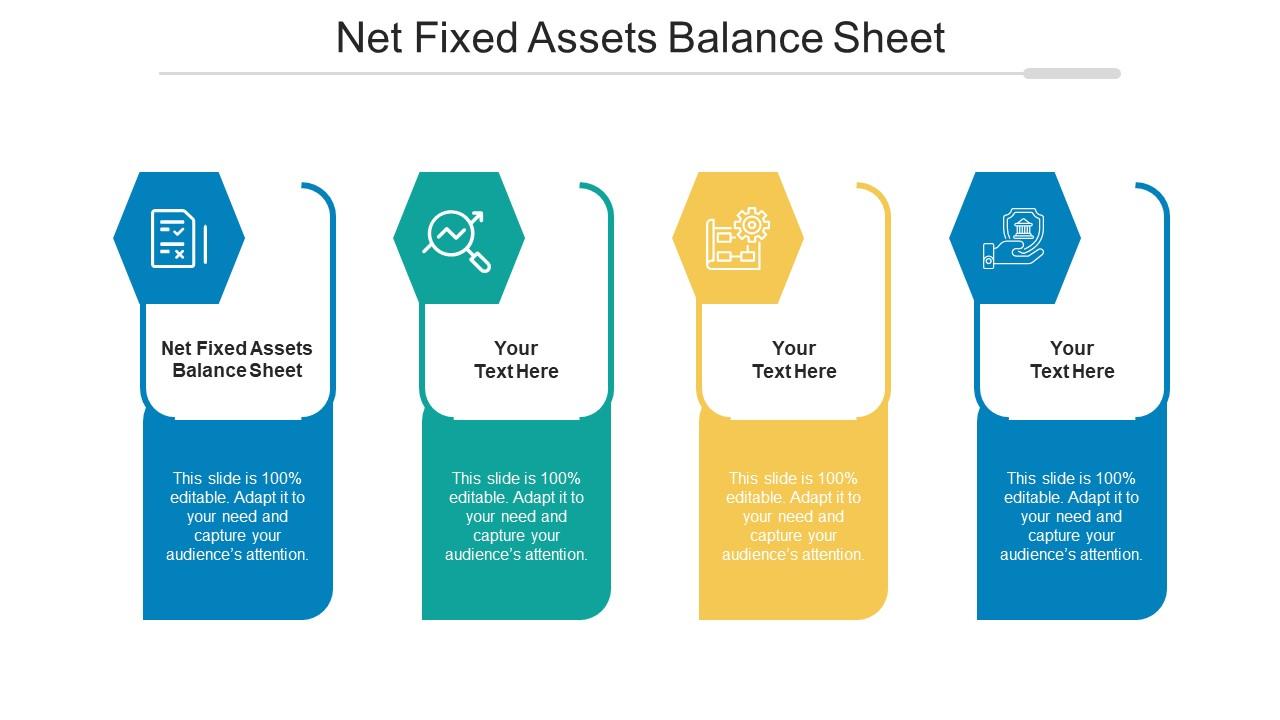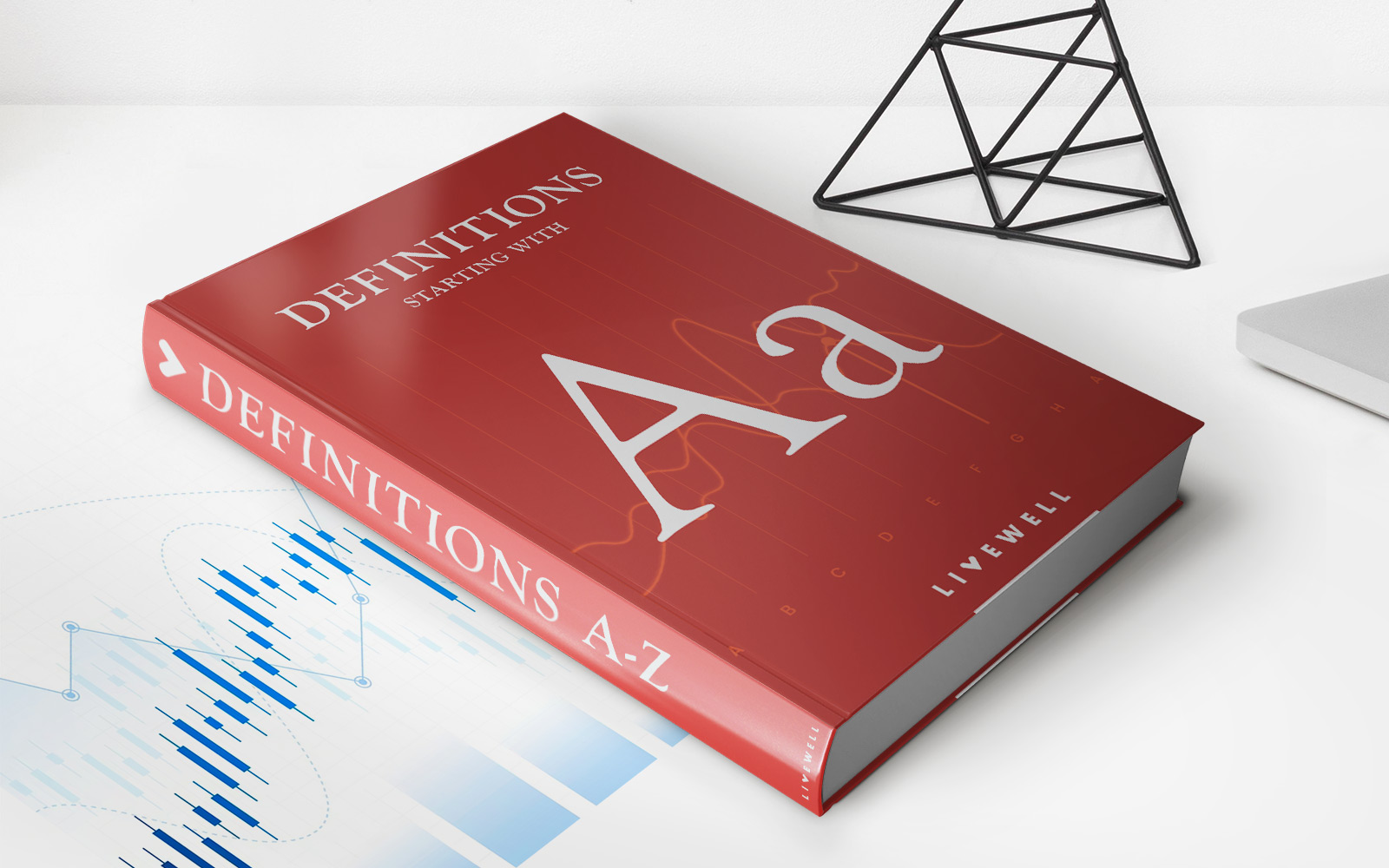Home>Finance>How Does Accounting Change With The Addition Of Merchandise Inventory?


Finance
How Does Accounting Change With The Addition Of Merchandise Inventory?
Published: October 8, 2023
Discover how the inclusion of merchandise inventory impacts accounting practices and gain a deeper understanding of the financial implications. Explore this and more in our comprehensive guide on finance and inventory management.
(Many of the links in this article redirect to a specific reviewed product. Your purchase of these products through affiliate links helps to generate commission for LiveWell, at no extra cost. Learn more)
Table of Contents
Introduction
Welcome to the world of accounting, where numbers tell the story of a company’s financial health. In the realm of finance, accurate and comprehensive accounting is essential for making informed business decisions and maintaining transparency. One crucial aspect of accounting is managing merchandise inventory – the goods a company purchases for resale.
Accounting for merchandise inventory entails tracking its value and impact on financial statements. When merchandise inventory is added to the equation, accounting practices need to adapt to accurately reflect the assets, expenses, and profits associated with these goods.
In this article, we will explore how accounting changes with the addition of merchandise inventory. We will dive into the basics of accounting, the specific considerations for merchandise inventory, and its impact on the company’s financial statements. Furthermore, we will analyze various valuation methods for merchandise inventory and their effects on profitability and financial ratios.
Whether you are an accounting student, business owner, or simply curious about the intricacies of financial management, understanding how merchandise inventory affects accounting will provide you with valuable insights into a fundamental aspect of business operations.
Understanding Merchandise Inventory
Before delving into the accounting aspects, it’s crucial to have a clear understanding of merchandise inventory. Merchandise inventory refers to the goods that a business purchases or manufactures with the intention of reselling them to customers. These can include physical products, such as clothing, electronics, or food items, that are held in stock for future sales.
Having a well-managed merchandise inventory is vital for businesses in various sectors, including retail, e-commerce, and manufacturing. Proper inventory management ensures that there are enough goods available to meet customer demand while minimizing the costs associated with excess or obsolete inventory.
Merchandise inventory includes three main components:
- Raw Materials: These are the basic materials that are used to produce the finished products. For example, in a clothing manufacturing company, raw materials would include fabrics, zippers, buttons, and threads.
- Work-in-Progress (WIP): WIP inventory consists of partially completed goods that are currently being worked on in the production process. These items have incurred some costs but are not yet ready for sale.
- Finished Goods: Finished goods are the completed products that are ready for sale. They have gone through the entire production process and are awaiting distribution or delivery to customers.
It is essential for businesses to have accurate and up-to-date records of their merchandise inventory. This allows them to assess their stock levels, monitor product sales, and make informed purchasing and production decisions.
Now that we have a clear understanding of merchandise inventory, let’s delve into the accounting principles and methods used to track and value these inventory items.
The Basics of Accounting
Accounting is the language of business that allows companies to keep track of their financial transactions, analyze their financial performance, and make informed decisions. It is a systematic process that records, classifies, and summarizes financial information in a structured manner.
At the heart of accounting are the financial statements, which provide a snapshot of a company’s financial position, performance, and cash flows. The three main financial statements are:
- Balance Sheet: This statement presents the company’s assets, liabilities, and shareholders’ equity at a specific point in time, providing insight into its financial position.
- Income Statement: Also known as the profit and loss statement, this document summarizes the company’s revenues, expenses, gains, and losses over a given period, reflecting its financial performance.
- Cash Flow Statement: This statement tracks the company’s incoming and outgoing cash flows, providing information about its operating, investing, and financing activities.
To ensure accuracy and reliability, accounting follows certain principles and guidelines, known as Generally Accepted Accounting Principles (GAAP). These principles ensure consistency and comparability across different companies and industries.
One fundamental principle of accounting is the matching principle, which states that expenses should be recognized in the same period as the revenue they help generate. This principle is important when accounting for merchandise inventory, as the cost of goods sold needs to be matched with the corresponding revenue from the sale of those goods.
Another essential concept in accounting is the double-entry system. According to this system, every transaction has two sides: a debit and a credit. Debits increase assets and expenses while decreasing liabilities and equity, while credits decrease assets and expenses while increasing liabilities and equity. This system ensures that the accounting equation of Assets = Liabilities + Equity is always in balance.
By maintaining accurate financial records and applying accounting principles, businesses can analyze their financial data, comply with regulatory requirements, and make informed financial decisions to drive growth and profitability.
Accounting for Merchandise Inventory
Accounting for merchandise inventory involves recording and tracking the value of inventory items as they flow in and out of the business. It is essential for businesses to accurately account for their inventory to determine the cost of goods sold and assess the financial health of the company.
There are two primary methods used to account for merchandise inventory:
- Periodic Inventory System: Under this system, the inventory is counted periodically, such as at the end of each accounting period. The cost of goods sold is calculated by subtracting the ending inventory from the sum of the beginning inventory and purchases made during the period. This method is less transaction-intensive but requires more labor in physical inventory counting.
- Perpetual Inventory System: With the perpetual system, each inventory item is constantly updated in real-time as goods are bought and sold. This method provides a more accurate representation of inventory levels and cost of goods sold, as it tracks each transaction. It requires the use of computerized systems or sophisticated inventory management software.
Regardless of the method chosen, businesses need to track the cost of the merchandise inventory accurately. The cost includes the purchase price of the goods and any additional expenses incurred to bring them to the point of sale, such as shipping costs or customs duties.
When recording inventory transactions, the following accounts are typically involved:
- Inventory: This account represents the value of the merchandise inventory on hand.
- Purchases: This account records the cost of merchandise purchased for resale.
- Cost of Goods Sold: This account reflects the cost of the inventory items sold during a specific period.
As merchandise inventory is bought and sold, the values are transferred between these accounts, allowing businesses to track the inflow and outflow of inventory and determine the cost of goods sold.
Accurate and timely recording of inventory transactions is crucial for producing reliable financial statements, managing inventory levels effectively, and making informed business decisions. By implementing an efficient inventory management system and adhering to proper accounting practices, businesses can optimize their operations and financial performance.
Changes in Financial Statements
When merchandise inventory is added to the accounting equation, it has a direct impact on a company’s financial statements. The addition of merchandise inventory affects the balance sheet, income statement, and statement of cash flows.
Balance Sheet: The balance sheet reflects the financial position of a company at a specific point in time. The addition of merchandise inventory increases the current assets section of the balance sheet. It is recorded as an asset under the “Inventory” or “Merchandise Inventory” category. The value of the inventory is initially recorded at its cost, which includes the purchase price and any additional costs associated with acquiring the goods.
Income Statement: The income statement shows a company’s revenues and expenses over a specific period, ultimately arriving at the net income or net loss. The addition of merchandise inventory impacts the income statement through the cost of goods sold (COGS) line item. COGS represents the cost incurred to produce or acquire the goods sold during the accounting period. The cost of goods sold is deducted from the company’s revenues, resulting in the gross profit.
Statement of Cash Flows: The statement of cash flows reports a company’s inflows and outflows of cash over a period of time. The addition of merchandise inventory affects the cash flow from operating activities. When inventory is purchased, it is considered an outflow of cash. Conversely, when merchandise inventory is sold, it generates cash inflows. The net effect depends on the timing of inventory purchases and sales during the accounting period.
It is important to note that changes in financial statements also occur when the value of merchandise inventory changes. This can happen due to factors such as obsolescence, damage, or changes in market value. When the value of inventory decreases, it may result in a write-down, which reduces the value of the inventory on the balance sheet and increases the cost of goods sold on the income statement.
Overall, the addition of merchandise inventory affects the balance sheet, income statement, and statement of cash flows, highlighting the importance of accurate inventory management and its impact on a company’s financial position and performance.
Impact on Cost of Goods Sold
The cost of goods sold (COGS) is a significant line item on the income statement that represents the direct costs incurred to produce or acquire the goods sold during a specific period. When merchandise inventory is added to the equation, it has a direct impact on the calculation of COGS.
Adding merchandise inventory means that the cost of the inventory items sold needs to be determined accurately. The COGS calculation consists of three key components:
- Beginning Inventory: This is the value of the inventory items held at the beginning of the accounting period. It represents the cost of goods carried over from the previous period.
- Purchases: Purchases represent the cost of acquiring additional inventory items during the accounting period. It includes the cost of goods purchased from suppliers, including any additional costs such as shipping or handling fees.
- Ending Inventory: The ending inventory represents the value of the inventory items that remain on hand at the end of the accounting period.
The COGS calculation is as follows: Beginning Inventory + Purchases – Ending Inventory = Cost of Goods Sold.
By accurately tracking inventory purchases and sale transactions, businesses can calculate the cost of goods sold and accurately reflect the value of merchandise inventory that has been sold. This, in turn, impacts the company’s gross profit or gross loss, which is calculated by subtracting the COGS from the revenue on the income statement.
Proper inventory management practices are crucial for calculating an accurate cost of goods sold. When inventory is mismanaged or not accounted for correctly, it can lead to distortions in the COGS calculation and misrepresentation of a company’s financial performance.
It is important for businesses to regularly reconcile their physical inventory counts with the amounts recorded in their accounting system to ensure accuracy. This helps identify any discrepancies and allows for adjustments to be made to the cost of goods sold and inventory figures.
The accurate calculation of cost of goods sold provides valuable information for decision-making, such as pricing strategies, inventory control, and evaluating the overall profitability of the business.
Valuation Methods for Merchandise Inventory
When it comes to valuing merchandise inventory, businesses have several methods to choose from. The valuation method selected has a significant impact on the value of inventory reported on the balance sheet and the cost of goods sold on the income statement. The two commonly used methods for inventory valuation are:
- First-In, First-Out (FIFO): The FIFO method assumes that the oldest inventory items are sold first. Under this method, the cost of goods sold is calculated using the cost of the oldest inventory items, while the ending inventory is valued based on the cost of the most recently purchased or produced items. This method is often seen as reflecting the flow of goods more accurately and is commonly used when perishability or obsolescence is a concern.
- Last-In, First-Out (LIFO): In contrast to FIFO, the LIFO method assumes that the most recently purchased or produced inventory items are sold first. The cost of goods sold is calculated using the cost of the most recent purchases, while the ending inventory is valued based on the cost of the oldest items. LIFO is commonly used in situations where there is inflation, as it allows businesses to report lower taxable income by matching higher-priced inventory with current revenue.
Each valuation method has its advantages and potential tax implications. FIFO tends to produce higher ending inventory values during times of inflation, as the older, lower-cost items remain in inventory. LIFO, on the other hand, leads to lower ending inventory values and higher cost of goods sold during periods of inflation.
Additionally, there are other less commonly used valuation methods, such as weighted average cost, specific identification, or retail inventory method. Weighted average cost calculates an average cost per unit based on the total cost of goods available for sale divided by the total number of units. Specific identification is used when inventory items can be individually identified and valued separately. Retail inventory method is typically used in retail businesses and estimates the cost of inventory based on the ratio of cost to selling price.
It’s important to note that the choice of inventory valuation method can have an impact on a company’s financial statements and financial ratios. Businesses should carefully consider their specific circumstances, such as industry norms, pricing strategies, and tax implications, when selecting the most appropriate valuation method for their merchandise inventory.
Regardless of the chosen method, consistency is crucial. Once a valuation method is established, it should be consistently applied, ensuring comparability across financial periods.
Inventory Turnover Ratio
The inventory turnover ratio is a financial metric that measures the efficiency of a company’s inventory management. It determines how quickly a company sells its merchandise inventory and replaces it with new stock. This ratio provides valuable insights into inventory management practices, sales trends, and the effectiveness of pricing and purchasing decisions.
The formula for calculating the inventory turnover ratio is:
Inventory Turnover Ratio = Cost of Goods Sold / Average Inventory
Where:
- Cost of Goods Sold represents the total cost incurred to produce or acquire the goods sold during a specific period.
- Average Inventory is the average value of the beginning and ending inventory for the period.
A high inventory turnover ratio generally indicates that a company is effectively managing its inventory, selling goods quickly, and generating revenue promptly. It suggests efficient operations and can be viewed positively by investors and creditors.
On the other hand, a low inventory turnover ratio may indicate issues such as slow sales, overstocking, or poor inventory management. It could suggest that products are not moving as quickly as expected or that pricing strategies need to be reviewed. A low ratio may tie up valuable resources in inventory and potentially result in increased carrying costs and obsolescence risks.
It’s important to note that an appropriate inventory turnover ratio can vary significantly across different industries. Industries with perishable or seasonal goods typically have higher turnover ratios, while industries with durable or specialized goods may have lower turnover ratios.
Monitoring and assessing the inventory turnover ratio can provide a company with insights into its sales velocity, inventory demand, and the need for inventory optimization. By analyzing the ratio over different periods and comparing it to industry benchmarks, businesses can identify trends, measure improvements or declines in inventory management efficiency, and make informed decisions to enhance operational effectiveness.
Ultimately, a balance needs to be struck to ensure a healthy inventory turnover ratio that aligns with industry norms, customer demand, and profitability goals. Regularly evaluating and managing inventory turnover can contribute to increased cash flow, reduced carrying costs, and improved overall financial performance.
Effects on Profitability and Financial Ratios
The management of merchandise inventory has a direct impact on a company’s profitability and various financial ratios. Effective inventory management practices can contribute to increased profitability and improved financial performance, while poor inventory management can lead to decreased profitability and financial inefficiencies.
Here are some key effects of merchandise inventory on profitability and financial ratios:
- Gross Profit Margin: The gross profit margin ratio measures the profitability of a company’s core operations by comparing the gross profit to the revenue. The cost of goods sold, which includes the cost of inventory, directly affects the calculation of the gross profit. By optimizing inventory levels, controlling costs, and implementing efficient inventory management systems, businesses can improve their gross profit margin.
- Operating Profit Margin: The operating profit margin ratio highlights the profitability of a company’s operations, taking into account both the cost of goods sold and operating expenses. Efficient inventory management can positively impact this ratio by reducing costs associated with excessive inventory, obsolescence, or stockouts that result in lost sales.
- Return on Assets (ROA): ROA measures how efficiently a company utilizes its assets to generate profits. Inventory is a significant asset, and its management plays a crucial role in determining the effectiveness of asset utilization. By optimizing inventory levels, minimizing carrying costs, and maximizing sales, businesses can improve their ROA.
- Working Capital: Working capital is the difference between a company’s current assets and current liabilities and represents its short-term liquidity. Inventories are a significant component of current assets. A proper balance in inventory levels minimizes the working capital tied up in inventory, allowing for better cash flow management and increased availability of funds for other business needs.
- Quick Ratio: The quick ratio, also known as the acid-test ratio, measures a company’s ability to cover its short-term liabilities without relying on inventory. By managing inventory effectively, businesses can optimize their quick ratio, demonstrating better financial stability and liquidity.
Efficient inventory management not only impacts profitability and financial ratios but also contributes to customer satisfaction, improved cash flow, reduced carrying costs, lower risks of obsolescence, and increased operational efficiency.
Businesses should continuously monitor their inventory-related financial metrics and ratios, benchmark them against industry standards, and identify areas for improvement. By implementing effective inventory management practices, companies can enhance profitability, strengthen financial stability, and drive sustainable growth.
Conclusion
Effective management of merchandise inventory is a critical aspect of financial management for businesses. Accounting for merchandise inventory requires careful tracking of inventory values, understanding the impact on financial statements, and implementing appropriate valuation methods. By accurately accounting for inventory, businesses can make informed decisions regarding their operations, pricing strategies, and financial health.
Throughout this article, we’ve explored the basics of accounting, the significance of merchandise inventory, and its effects on financial statements. We’ve discussed the importance of proper inventory management, including valuation methods such as FIFO and LIFO, and the calculation of key financial ratios like inventory turnover ratio.
Properly managing merchandise inventory not only impacts a company’s financial statements but also influences profitability, financial ratios, and overall business performance. Efficient inventory management results in improved gross profit margins, enhanced liquidity, and optimized working capital. It also helps minimize the risks of stockouts, obsolescence, and excessive carrying costs.
Businesses must consistently evaluate and fine-tune their inventory management practices to ensure adequate supply, meet customer demand, and maximize profitability. This can be achieved by leveraging technology for inventory tracking, implementing effective inventory control measures, and regularly analyzing financial data to identify areas for improvement.
In conclusion, understanding how accounting changes with the addition of merchandise inventory is crucial for businesses to maintain accurate financial records, make informed decisions, and drive sustainable growth. By implementing sound inventory management practices and utilizing the appropriate valuation methods, businesses can optimize their inventory, bolster their financial health, and thrive in today’s competitive business landscape.














